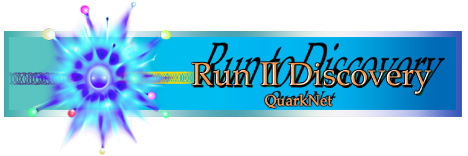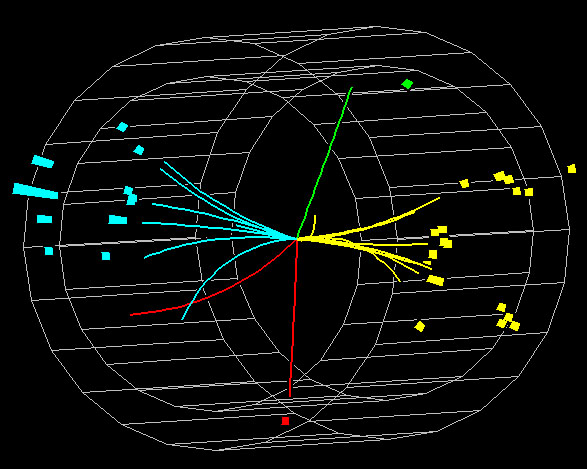

What information do we need to identify a known particle or to "discover" a new one?
| ||
 This is a partial side view of tracks in a detector. The little boxes show where energy was deposited. |
 This is the same event from an end view. Notice that some tracks are curved more than others. Particles with greater momenta are affected less by the magnetic field, so their tracks are straighter. | |
Become an events-detective! Learn how to identify the tracks of a few particles. | ||
Project Contact: ALErzberger@lbl.gov
Last Update: April 13, 2001
http://quarknet.fnal.gov/run2/news.html